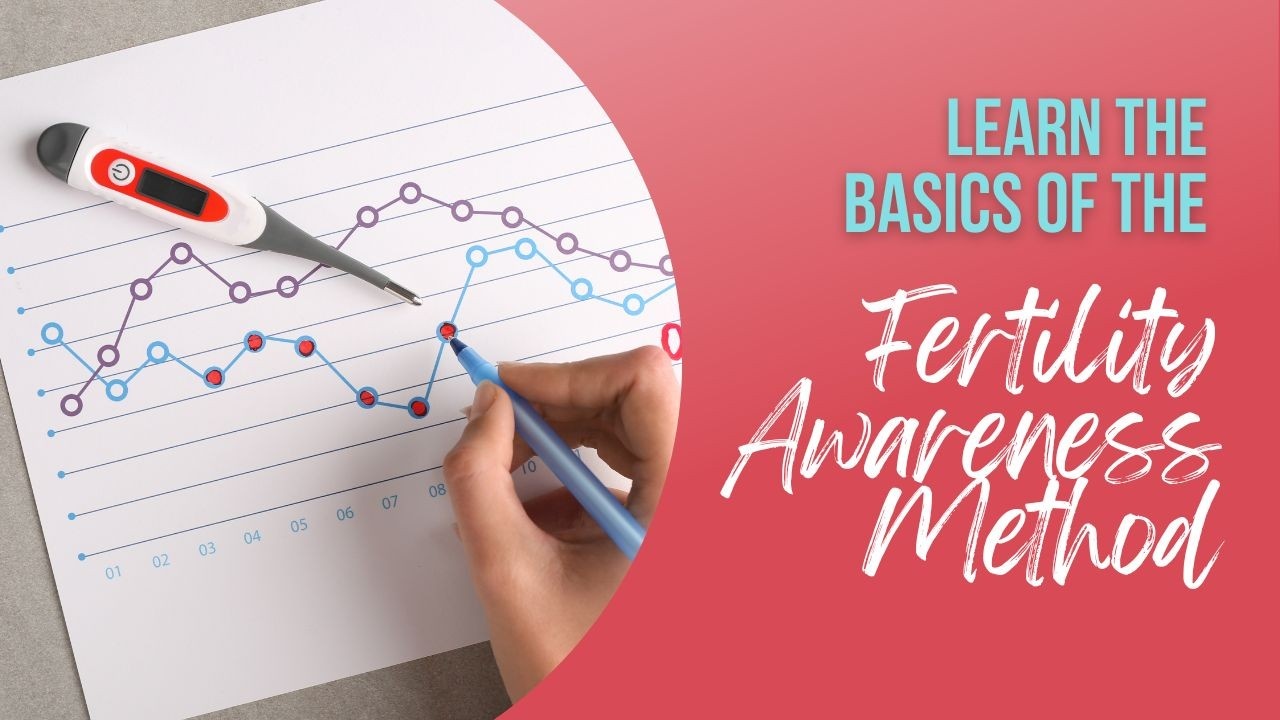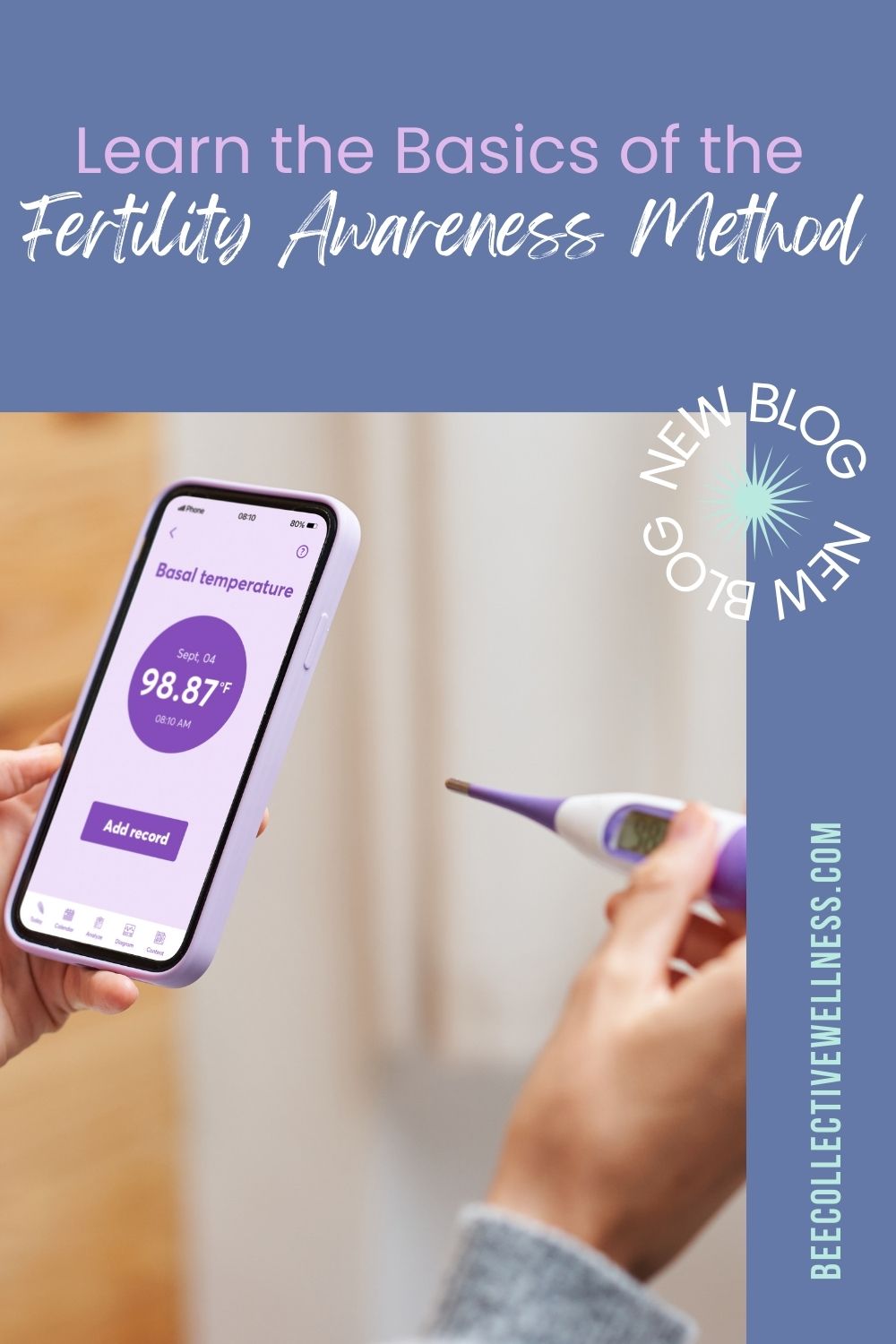
How to Use the Fertility Awareness Method to Track Your Menstrual Cycle
Dec 07, 2022Are you relying on an app to tell you when your next period will be? What if I told you that the app is actually not the most accurate way to track your menstrual cycle?
How Does the Menstrual Cycle Work?
Before we jump into using the fertility awareness method to track your menstrual cycle and the purpose of tracking, it's important to first understand how the menstrual cycle works.
There are four phases of the menstrual cycle - menstruation, follicular, ovulatory, and luteal. Throughout the four phases of your cycle, hormones gently rise and fall at various times of your cycle. The fluctuations in the hormones trigger the next event or phase of the menstrual cycle. You can learn more about these specific hormones in a blog post here.
28 days is the average length of the entire menstrual cycle encompassing the four phases. While 28 days is average, anything between 26 and 35 days can be considered normal. What I want you to keep in mind and note is if you've had shifts away from what is NORMAL FOR YOU. For example, let's say you have always been a 30 day cycle type of gal and suddenly your cycles are trending toward 26 days. Or you've been like clockwork every 27 days and suddenly you're consistently having 40 day cycles. You'll want to start investigating why your cycles have shifted.
If your cycles normally trend towards the 40-60+ length, that is something that needs to be explored as well as there may be an underlying hormonal imbalance contributing to your long menstrual cycle.
When referring to your menstrual cycle length, Day 1 is the very first day that you have menstrual flow. This not spotting prior to your period but actual flow. To calculate the actual overall length of your cycle start with Day 1 of menstrual flow all the way through the four phases until the day before you bleed again.
Why Ovulation Is Important
Ovulation, not your period, is the most important event that happens in the menstrual cycle. Ovulation occurs when an egg has reached maturity. Estrogen levels will peak which will "turn off" the follicle-stimulating hormone (FSH) being secreted by the pituitary gland and "turn on" the luteinizing hormone (LH). The rise in LH triggers the release of the egg from the follicle - AKA ovulation.
Once the egg is ovulated, it is viable for up to 24 hours. If it is not fertilized by sperm within that 24 hours, the egg will disintegrate. It's important to note that high-quality sperm can live up to 5 days in the vaginal canal. This is very important to understand for those who are trying to conceive as well as those who wish to avoid pregnancy.
The sac that is left behind after ovulation is the corpus luteum. The corpus luteum becomes a temporary gland that secretes progesterone and estrogen in the luteal phase of the menstrual cycle. If implantation of a fertilized egg does not occur, the corpus luteum will slowly disintegrate and progesterone and estrogen levels will fall, triggering your period.
Progesterone has many beneficial properties that affect mood, metabolism, and sleep (read more here). It is only present in the luteal phase of the menstrual cycle.
Progesterone should be the prevailing hormone in relationship to estrogen in the luteal phase. When estrogen is unopposed by progesterone, estrogen dominance symptoms can arise and be problematic for many women.
How Can I Track My Menstrual Cycle?
With the convenience of technology, we have access to a plethora of apps to track a period. In fact, a study done in 2016 showed that nearly 100 apps allow women to track their fertility and menstrual cycles.1 But here's the downfall with most apps, they may be "predicting" your fertile window and when your next period should arrive based on the historical data you put in the app, not on the changes your body experiences throughout your cycle like cervical mucus production, basal body temperature, and position of the cervix. The Fertility Awareness Method tracks the changes occurring in the body to indicate ovulation or irregularities.
What is Fertility Awareness Method?
The Fertility Awareness Method (FAM) is a non-hormonal approach to track ovulation to avoid pregnancy or to conceive. By observing changes in your cervical mucus, basal body temperature, and position of your cervix, you can understand when your fertile window is to either abstain from sex or use barrier methods if you do not want to conceive. If conception is your plan, this is the window through which you are more likely to conceive. A fertile window is the 5 days leading up to ovulation and the 24 hours after ovulation. This is because sperm is viable and can live in the vagina for up to 5 days while an egg is viable for up to 24 hours. You only ovulate once in a menstrual cycle.
Tracking Your Cervical Mucus
Cervical mucus is the result of estrogen rising. Cervical mucus makes it easy or difficult for sperm to swim past your cervix and into the uterus. Cervical fluid also protects sperm from the acidic environment of your vagina.
You can use your fingers to feel for fluid at the entryway to your vagina or observe what is on the toilet paper or your underwear. Look for color and consistency. Just after menstruation, cervical fluid will be absent or dry. As estrogen levels start to increase your cervical fluid will become more sticky/creamy/white/lotion-y (usually around day 9-10 in a 28-day cycle).
As estrogen peaks, 1–2 days before ovulation, cervical fluid often resembles raw egg whites that you can stretch for inches between your thumb and finger. It will be clear, wet, and slippery. This is considered your peak day. Occasionally ovulation occurs on the same day but usually, it occurs 1-2 days after your cervical mucus represents a more fertile consistency. The consistency of the cervical mucus during this window protects the sperm from the acidic environment of the vagina and is more viscous for sperm to swim through.
After ovulation, cervical fluid will become more fibrous and difficult for sperm to pass through. It will be sticky/dry or even absent. Cervical mucus should never be gray, green, yellow, or brown, or have a funky, fishy, or metallic smell.
Tracking Basal Body Temperature
To track your basal body temperature, use a thermometer that displays 2 digits after the decimal point. You will want to take your temperature upon rising after at least 3 hours of sleep. Your baseline basal body temperature should be at least 97.3 degrees Fahrenheit. Basal body temperature will rise at least 0.2 degrees and stay elevated after ovulation. This increase in temperature should be higher than the highest temperature in the 6 previous days. You should have at least 3 consecutive days of elevated temperatures to confirm ovulation. If you do not sustain a higher temperature then ovulation did not occur. Things like stress, alcohol, travel, poor sleep, and illness can affect your basal body temperature.
There are many devices you can use to track your temperature as well. Wearable devices have the capability to track body temperature so you do not have to worry about taking your temperature upon rising. You will want to stick with one mode of tracking temperatures in a cycle to avoid skewing the data.
Once you collect your temperature and you can track this info in an app like Kindara, Read Your Body, or Clue or a paper chart such as this one.
Tracking Cervical Position
Tracking cervical position is an additional way to make note of the changes your body has throughout your cycle. It's something that some women do depending on their situation. To check the position of your cervix. you would insert 1-2 fingers into your vagina to feel for the cervix.
During menstruation, the cervix will be low and closed. It will be hard and feel like the tip of your nose. During the follicular phase, it will move halfway up the vagina and still be closed. During ovulation, it will be high, open to allow sperm in, and soft, like your lips. After ovulation, the cervix will close, become firm, and move halfway down the vagina again. The Flower Empowered provides more information about how you can easily check for cervical positioning.
Use the Fertility Awareness Method to Track Your Menstrual Cycle
I know this information can feel overwhelming and tedious. But after 3-4 months of tracking, it will become second nature! Plus you gain a lot of insight into any menstrual irregularities or symptoms you may be experiencing. The body truly is fascinating!
Want more information on the Fertility Awarement Method, check out these great resources:
Fertility Awareness Method of Birth Control
Taking Charge of Your Fertility by Toni Weschler
Fertility Awareness Mastery Charting Workbook by Lisa Hendrickson-Jack

*The information available on this website is for general health information only and is not intended to be a substitute for professional medical advice, diagnosis, or treatment. You should not rely exclusively on information provided on the Website for your health needs. You can read more about our disclaimer here.*
References:
1. https://pubmed.ncbi.nlm.nih.gov/27390383/
Are you overwhelmed by all of the conflicting information regarding health, hormones, nutrition, and weight management?
Join me once a month for a FREE "Ask Me Anything" live Zoom sesh! I'll answer all the questions you've been spending so much time searching the internet for.









